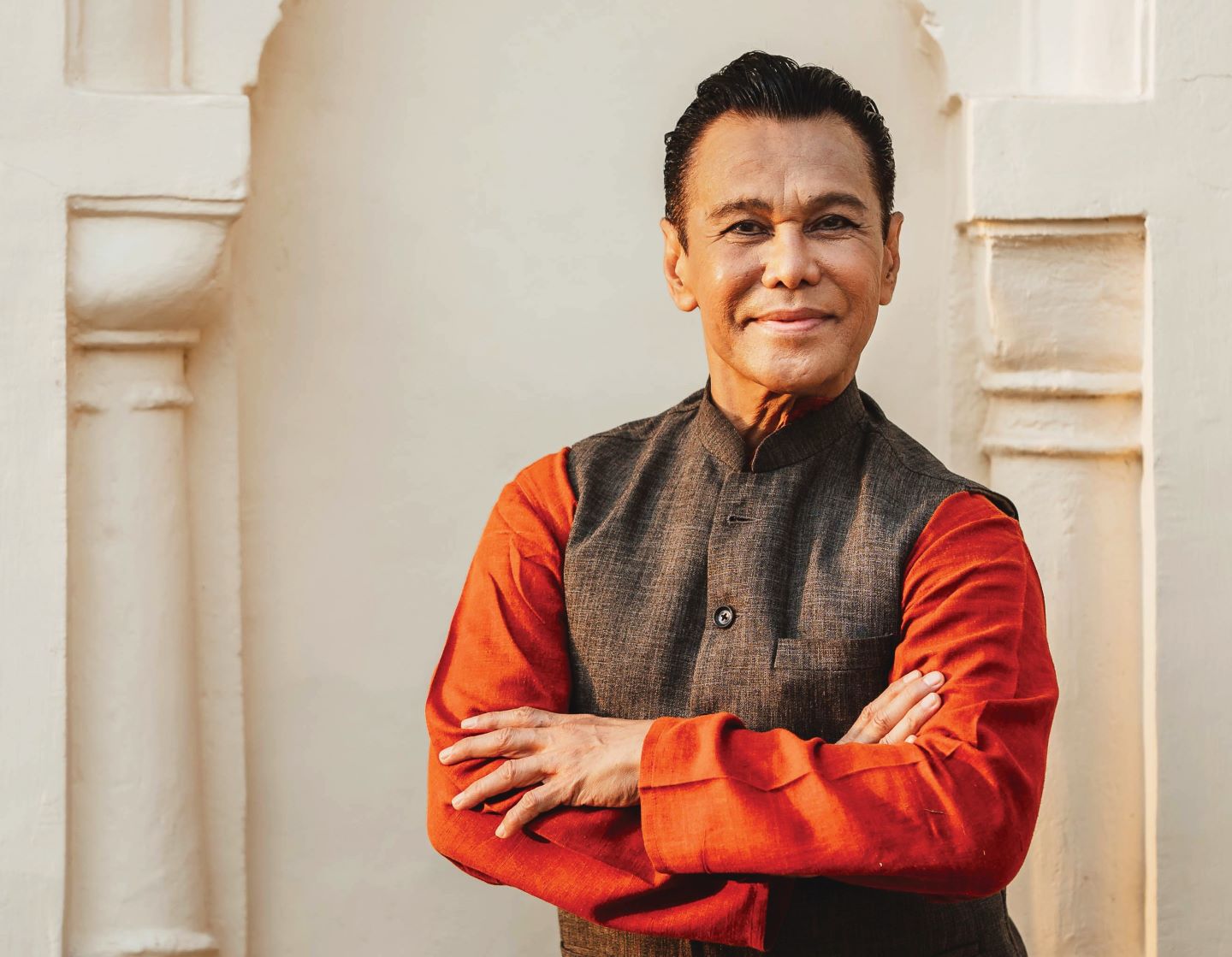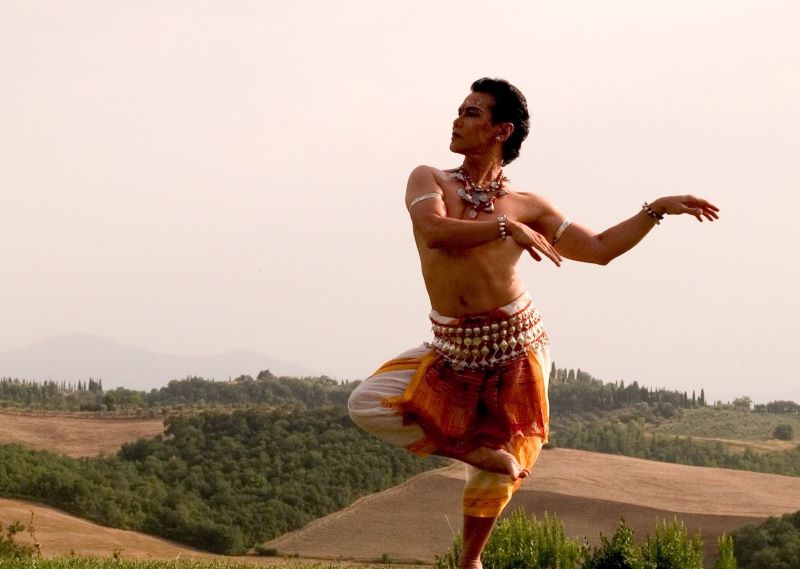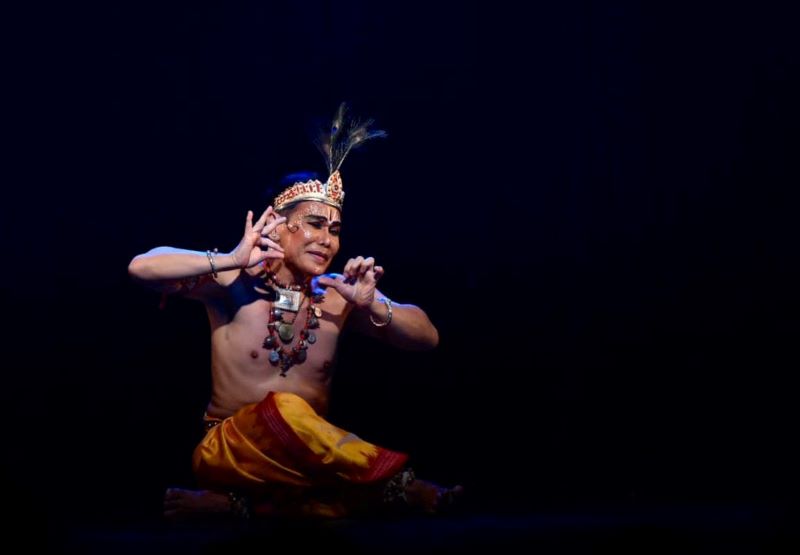
Moulded by everything from ballet to Bharatanatyam, it was in Odissi that Ramli found his home and laid the foundation for his legacy (Photo: Ramli Ibrahim)
A graceful extension of the arms, a light step forward, a fluid twirl and a sudden stillness that builds anticipation. If anyone knows how to hold an audience captive, it is Datuk Ramli Ibrahim. No matter the venue — a grand hall, an outdoor festival or on ancient and holy ground — his performances are poetry in motion, a fusion of the traditional and contemporary disciplines that have shaped him as a dancer and choreographer.
As he approaches his 70th birthday, such performances by the maestro himself are rarer but he continues to impart his knowledge and stringent standards to his students. This steady, dedicated effort isn’t for personal glory, but a cause much bigger than him.
Moulded by everything from ballet to Bharatanatyam, it was in Odissi that Ramli found his home and laid the foundation for his legacy. While it is one of the oldest classical dances, an expressive form of storytelling that originated from the temples of Odisha, it was little known and rarely performed outside of India. But when opportunity knocked, he seized it with both hands.
“There was no epiphany for me when it came to dancing,” says Ramli. “I always knew what my inner calling was, I heard it loud and clear. I had a strong artistic temperament and was waiting to give this part of myself the chance to bloom.
“Art was a big part of my life growing up. My father was a lecturer at the Specialist Teachers Training Institute in Cheras [in Kuala Lumpur], where artists Syed Ahmad Jamal and Yeoh Jin Leng were also teaching. They were family friends and my father used to show them my drawings, which were usually of buxom and skimpily dressed women. I still have two Orang Asli drawings I did when I was very young. Even as a child, I guess I was fascinated by human anatomy. But I didn’t just want to capture it on paper, I wanted to perfect it in practice.”
sutra.jpg

Suppressing his artistic side during his time as a scholar at the Royal Military College meant Ramli was a miracle waiting to happen or a destructive force in the making if he remained unfulfilled. Then, a scholarship to Australia as part of the first batch of Mara matriculation students to Perth opened doors. He learnt dance formally and worked in professional productions that took him across the country while studying.
Unexpectedly, it was the music of Odissi, rather than the dance form itself, that stirred his interest. “I was completely smitten when I first heard the late Pandit Raghunath Panigrahi sing,” he recalls. “That was an epiphany! I later journeyed to Odisha to check out Odissi for myself and the rest, as they say, is history. Indrani Rahman, whom I met while performing in New York with the Sydney Dance Company, as she was teaching at Julliard, led me to the legendary dancer Deba Prasad Das in Bhubaneswar, Odisha. Indrani was the first Indian dancer accompanied by Deba to perform Odissi for the outside world. Deba would become my dance guru and my life was forever changed.”
In the decades since, Ramli has perhaps given more back to Odissi than Odissi gave to him. He founded Sutra Dance Theatre in 2007 as a bastion of traditional and contemporary arts, handing down the intricacies of ancient dance forms to new generations. He brought Odissi into the public consciousness of Malaysians, and then travelled around the world to showcase the heart-wrenching beauty of its sculptural forms and the homegrown talents who now carry on the craft.
For his efforts, he received the prestigious Sangeet Natak Akademi Award — the first Malaysian to receive this highest national honour in India conferred on performing artistes, gurus and performing arts scholars — as well as the Padma Shri award from the Indian government. At home, he was conferred a Datukship by the Yang di-Pertuan Agong and honoured with the Lifetime Arts Achievement Award by the Sugam Culture and Heritage Foundation, among others.
But while such appreciation is welcome, Ramli is looking ahead at what’s to come for those who live and earn their livelihoods in the creative spheres. As he nears 70, with many of those decades spent in the loving embrace of the dance world, he has seen it all. Optimism would be a fine thing but it has to be earned, and the pace and direction Malaysia is moving in doesn’t reassure him as much as he would like.
ramli.jpg

“Artistes in Malaysia need more empathy for arts and culture from the unity government,” he says. “We are hoping that the powers that be recognise that business and culture complement one another. We cannot be a business hub without also being a cultural centre. Our prime minister is one of the most culturally literate leaders we have and seems to understand the role we can play in nation-building. But to tell you the truth, we’re still waiting for the implementation of the ‘Madani’ policy for arts and culture, as it is one of the eight areas of focus in this framework.”
Until then, artistes in Malaysia have to largely fend for themselves, a situation they know only too well. “I must say they’ve really shown their mettle in times of hardship,” muses Ramli. “We saw this when things went a bit wonky, politically and economically, during the pandemic. Even in such restrictive circumstances, Malaysian artistes were able to boost the morale of the public during those bleak months, and the public has been very supportive.
“However, we can’t wait for a miracle to happen in the arts. Until more enlightened policies for arts and culture are adopted and implemented, until the right people are in charge of advancing the nation’s arts and culture, ordinary Malaysians must continue creating creative oases. The public must gather societies of like-minded people who are sympathetic to arts and culture and continue their support with even more vigour to not only keep the arts alive, but ensure it flourishes and thrives.”
Sutra Foundation will be exhibiting one of A Prathap’s most evocative series of photographs on 'Ramli in Konark' to celebrate the eminent dancer’s birthday. See it at KamaRia Gallery, 6 Jalan 16/7, Seksyen 16, PJ on May 20 at 8pm. Exhibition continues until June 20, 2023. Viewing by appointment only.
This article first appeared on May 15, 2023 in The Edge Malaysia.


